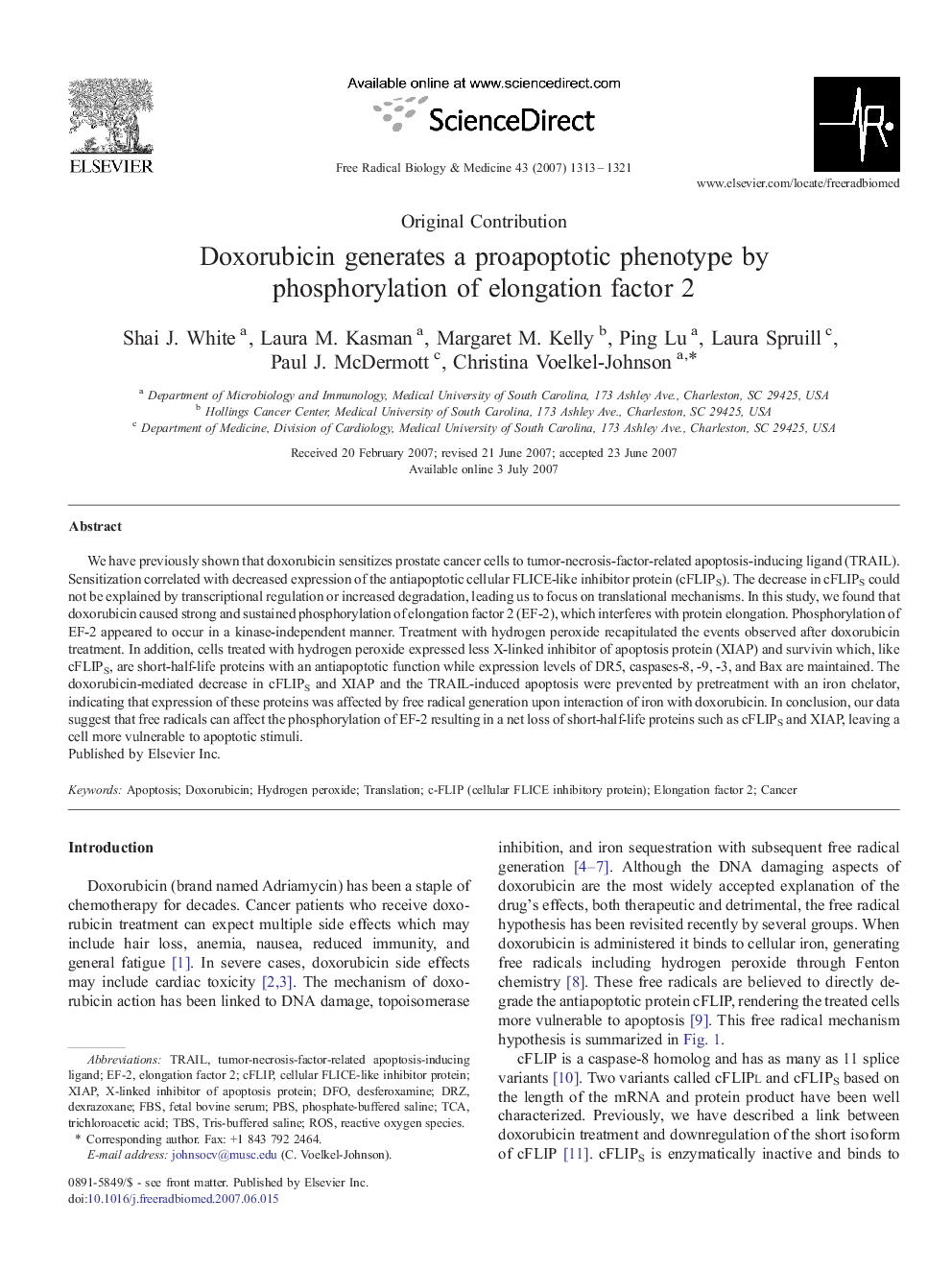| Article ID | Journal | Published Year | Pages | File Type |
|---|---|---|---|---|
| 1911467 | Free Radical Biology and Medicine | 2007 | 9 Pages |
We have previously shown that doxorubicin sensitizes prostate cancer cells to tumor-necrosis-factor-related apoptosis-inducing ligand (TRAIL). Sensitization correlated with decreased expression of the antiapoptotic cellular FLICE-like inhibitor protein (cFLIPS). The decrease in cFLIPS could not be explained by transcriptional regulation or increased degradation, leading us to focus on translational mechanisms. In this study, we found that doxorubicin caused strong and sustained phosphorylation of elongation factor 2 (EF-2), which interferes with protein elongation. Phosphorylation of EF-2 appeared to occur in a kinase-independent manner. Treatment with hydrogen peroxide recapitulated the events observed after doxorubicin treatment. In addition, cells treated with hydrogen peroxide expressed less X-linked inhibitor of apoptosis protein (XIAP) and survivin which, like cFLIPS, are short-half-life proteins with an antiapoptotic function while expression levels of DR5, caspases-8, -9, -3, and Bax are maintained. The doxorubicin-mediated decrease in cFLIPS and XIAP and the TRAIL-induced apoptosis were prevented by pretreatment with an iron chelator, indicating that expression of these proteins was affected by free radical generation upon interaction of iron with doxorubicin. In conclusion, our data suggest that free radicals can affect the phosphorylation of EF-2 resulting in a net loss of short-half-life proteins such as cFLIPS and XIAP, leaving a cell more vulnerable to apoptotic stimuli.
